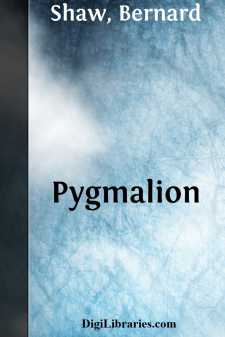Categories
- Antiques & Collectibles 13
- Architecture 36
- Art 48
- Bibles 22
- Biography & Autobiography 813
- Body, Mind & Spirit 142
- Business & Economics 28
- Children's Books 17
- Children's Fiction 14
- Computers 4
- Cooking 94
- Crafts & Hobbies 4
- Drama 346
- Education 46
- Family & Relationships 57
- Fiction 11829
- Games 19
- Gardening 17
- Health & Fitness 34
- History 1377
- House & Home 1
- Humor 147
- Juvenile Fiction 1873
- Juvenile Nonfiction 202
- Language Arts & Disciplines 88
- Law 16
- Literary Collections 686
- Literary Criticism 179
- Mathematics 13
- Medical 41
- Music 40
- Nature 179
- Non-Classifiable 1768
- Performing Arts 7
- Periodicals 1453
- Philosophy 64
- Photography 2
- Poetry 896
- Political Science 203
- Psychology 42
- Reference 154
- Religion 513
- Science 126
- Self-Help 84
- Social Science 81
- Sports & Recreation 34
- Study Aids 3
- Technology & Engineering 59
- Transportation 23
- Travel 463
- True Crime 29
Candida
by: Bernard Shaw
Description:
Excerpt
ACT I
A fine October morning in the north east suburbs of London, a vast district many miles away from the London of Mayfair and St. James's, much less known there than the Paris of the Rue de Rivoli and the Champs Elysees, and much less narrow, squalid, fetid and airless in its slums; strong in comfortable, prosperous middle class life; wide-streeted, myriad-populated; well-served with ugly iron urinals, Radical clubs, tram lines, and a perpetual stream of yellow cars; enjoying in its main thoroughfares the luxury of grass-grown "front gardens," untrodden by the foot of man save as to the path from the gate to the hall door; but blighted by an intolerable monotony of miles and miles of graceless, characterless brick houses, black iron railings, stony pavements, slaty roofs, and respectably ill dressed or disreputably poorly dressed people, quite accustomed to the place, and mostly plodding about somebody else's work, which they would not do if they themselves could help it. The little energy and eagerness that crop up show themselves in cockney cupidity and business "push." Even the policemen and the chapels are not infrequent enough to break the monotony. The sun is shining cheerfully; there is no fog; and though the smoke effectually prevents anything, whether faces and hands or bricks and mortar, from looking fresh and clean, it is not hanging heavily enough to trouble a Londoner.
This desert of unattractiveness has its oasis. Near the outer end of the Hackney Road is a park of 217 acres, fenced in, not by railings, but by a wooden paling, and containing plenty of greensward, trees, a lake for bathers, flower beds with the flowers arranged carefully in patterns by the admired cockney art of carpet gardening and a sandpit, imported from the seaside for the delight of the children, but speedily deserted on its becoming a natural vermin preserve for all the petty fauna of Kingsland, Hackney and Hoxton. A bandstand, an unfinished forum for religious, anti-religious and political orators, cricket pitches, a gymnasium, and an old fashioned stone kiosk are among its attractions. Wherever the prospect is bounded by trees or rising green grounds, it is a pleasant place. Where the ground stretches far to the grey palings, with bricks and mortar, sky signs, crowded chimneys and smoke beyond, the prospect makes it desolate and sordid.
The best view of Victoria Park is from the front window of St. Dominic's Parsonage, from which not a single chimney is visible. The parsonage is a semi-detached villa with a front garden and a porch. Visitors go up the flight of steps to the porch: tradespeople and members of the family go down by a door under the steps to the basement, with a breakfast room, used for all meals, in front, and the kitchen at the back. Upstairs, on the level of the hall door, is the drawing-room, with its large plate glass window looking on the park. In this room, the only sitting-room that can be spared from the children and the family meals, the parson, the Reverend James Mavor Morell does his work....












